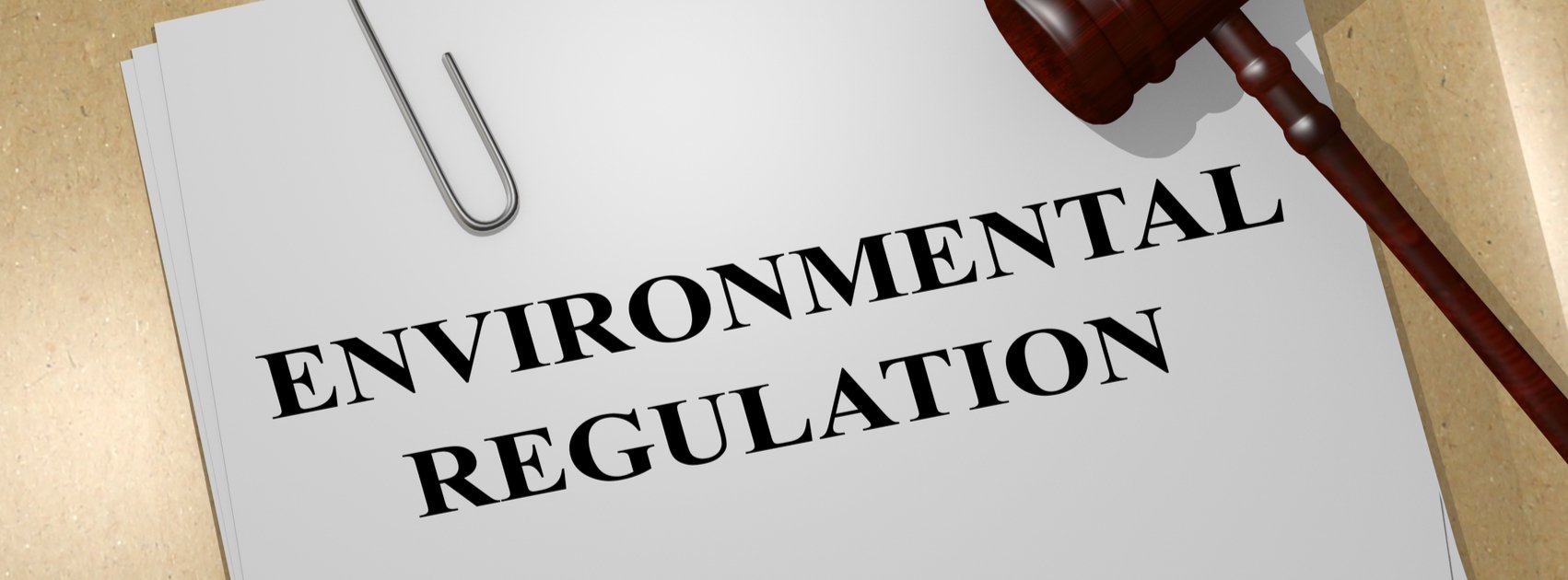Not sure what to expect from Mexico's environmental regulations? While there are some critical differences to understand, the truth is that environmental policies in Mexico share many commonalities with the United States. In some cases, because of unique differences in how these policies are shaped, Mexico's law better prepares the country to curb potential environmental problems.
That said, it's essential to understand these regulatory differences and the bodies that enforce compliance with Mexico's environmental regulations. U.S. companies considering manufacturing in Mexico should be aware that enforcement of Mexican environmental laws and regulations should not be taken lightly.
Understanding environmental regulations in Mexico is paramount for companies considering offshoring their operations to the country. Mexico has comprehensive environmental laws aimed at protecting natural resources and minimizing pollution.
These regulations cover various aspects such as air quality standards, water pollution control measures, hazardous waste disposal regulations, and the environmental permitting process. Compliance with these regulations is essential to avoid legal issues and ensure sustainable manufacturing practices.
By familiarizing themselves with Mexico's environmental laws and partnering with experienced professionals who understand the intricacies of compliance, companies can effectively navigate the regulatory landscape and operate in an environmentally responsible manner.
How Mexico’s legal system shapes its environmental regulations
To understand the influence of Mexico’s environmental regulations, it is important to understand that Mexico’s legal system is significantly different from that of the U.S. The United States follows a “common law” system, whereas Mexico follows a “civil law” system. The significance between the two is that Mexico, unlike the U.S., recognizes the decisions of the court as creating law. Provisions of the Constitution surpass any legislation and regulations. Legislation succeeds any regulations.
Similar to the U.S., Mexico has a national federal system of government and is made up of 31 states. However, Mexico’s national government is given much more power than U.S. or Canadian national governments are given. Mexico’s president initiates almost all federal laws, which are passed with little or no changes. Mexico’s court system has both state and federal levels. Each state has trial and appellate courts; the federal level includes trial courts, circuit courts of appeal, and a Supreme Court. The Supreme Court is made up of four parts, with each handling a different area of law: criminal, administrative, civil, or labor, and each part also contains five justices.
While U.S. attorneys and judges can base many laws on interpretation, in Mexico, there are codes in which statutes are set down as their primary source of law since the federal constitution in Mexico is the basis for all laws.
History of environmental policies in Mexico
With its enactment in 1994, NAFTA lifted strict restrictions on many types of investments made by the U.S. and Canada in Mexico. However, the increased interest in Mexican investment soon earned Mexico an unfounded reputation for being a location where companies could avoid the strict environmental laws of the U.S. These companies falsely believed that Mexican ecological laws would not be forcefully implemented. That could not be further from the truth.
In 1987, Mexico amended its Constitution to allow Congress the authority to enact laws promoting the participation of federal, state, and local authorities in environmental matters and to impose limitations on the use and ownership of land property. This change led to the enactment in 1988 of the first comprehensive environmental law known as the General Ecology Law (LGEEPA).
LGEEPA addresses a broad range of environmental matters, including water, air, and ground pollution; resource conservation; and environmental enforcement. LGEEPA closely resembles the U.S. statutes such as the Clean Air Act, Clean Water Act, and Resource Conservation and Recovery Act. However, unlike these American Acts that were formed in response to specific issues, the Mexican law is provisional and encompasses many issues that come with the country’s rapid industrialization.
Assessments of border industrial facilities
From 1992 to 1994, Mexican officials performed more than 16,000 assessments of industrial facilities. It was quickly understood that factories located along the U.S.-Mexican border were producing so much pollution that cancer and birth defect rates were exceedingly high in northern Mexico and U.S. border cities. As a result, the U.S. and Mexico agreed to a widespread plan to clean up environmental contagion along the periphery. Together they invested approximately $700 billion in programs to improve pollution control, augment ecological enforcement, and increase environmental developments. In 1995 Mexico obtained a loan for about $1.8 billion from the World Bank to further strengthen its enforcement of environmental laws in the border area.
Two agreements with the U.S. further contributed to the reduction of border pollution. The North American Development Bank (NAD Bank) was established to provide financing for environmental projects that combat climate change in the border area. The Border Environmental Cooperation Commission (BECC) works with state and local governments and nongovernmental organizations to improve infrastructure within border communities.
Amendment and administration of the LGEEPA
In 1992, the law was amended, the environmental standards were reevaluated, and over 100 more standards were issued. Mexican states were also delegated the authority to establish local environmental policies.
In its early years, LGEEPA was administered by SEDUE. However, in 1992 enforcement of the newly restructured General Ecology Law was given to the Secretariat of Social Development. In 1997 the Secretariat of the Environment, Natural Resources and Fisheries (SEMARNAT) was created to take on the role of environmental law enforcement, a role that it still holds today.
LGEEPA continues to be regularly amended in order to meet today’s awareness of environmental challenges and better protect the environment. To remain in compliance with all updates, it is important that manufacturers work with a partner knowledgeable in Mexican environmental regulations and compliance practices.
Environmental law enforcement in Mexico
SEMARNAT serves as Mexico’s primary federal environmental agency. This body ensures the law is being properly followed and enforced in a role similar to the United States’ Environmental Protection Agency.
SEMARNAT is responsible for enforcing environmental laws and standards; protecting, restoring, and conserving natural resources and ecological welfare; supervising the use of natural resources; and ensuring environmentally safe management of hazardous materials and non-hazardous waste, air pollution, and noise. In this capacity, the department grants contracts, licenses, permits, and authorizations to manufacturers and other entities. SEMARNAT also forms standards to maintain sustainable development programs.
To ensure that the law is being thoroughly enforced, SEMARNAT has five decentralized departments that oversee specific areas of environmental law:
· The National Institute of Ecology (INE)
· The National Water Commission (CAN)
· The Mexican Institute of Water Technology (IMTA)
· The Federal Agency for the Protection of the Environment (PROFEPA)
· The National Institute of the Fishery (INP)
PROFEPA is SEMARNAT’s enforcement arm. This agency has the authority to inspect manufacturing sites and lead prosecution in the event of noncompliance with environmental laws. PROFEPA also oversees the federal voluntary environmental audit program.
Mexico vs U.S. environmental law enforcement
Environmental regulations in Mexico are typically modeled on the same rules as the United States enforces through EPA and the Occupational Safety and Health Administration. As a result, many of the requirements will be familiar to manufacturers.
One notable difference is that Mexico allows manufacturers some flexibility in proposing control and treatment strategies rather than mandating a specific course of action. That means it is possible to craft a treatment strategy specific to your operation, whereas elsewhere, the exact solution may be mandated in some fashion. Because of this, it can sometimes be easier to comply with environmental regulations in Mexico.
To learn more, listen to our podcast on starting a manufacturing operation. Subscribe for future updates at tetakawi.com/resources/podcasts.
Key industrial environmental regulations in Mexico
All industrial facilities must comply with Mexico’s environmental registration, licensing, and reporting requirements. This begins at startup when manufacturers apply for an environmental operating license. Alongside the request for this license, manufacturers must include a statement describing the faculty’s potential impact on the environment. These materials are sent to the Attorney General, who has the authority to require a full environmental impact study to be conducted as a precondition to issuing the license.
As operations get underway, there are several key regulations with which manufacturers must maintain compliance.
Air pollution regulations
LGEEPA regulates air pollution from both immobile and itinerant sources. For industrial facilities, the law establishes atmospheric air quality standards (Maximum Permanent Levels) that are similar to those set by the U.S. EPA’s National Ambient Air Quality Standards.
Mexico’s system is directed by SEMARNAT. This differs from the U.S., where the Clean Air Act requires air quality attainment to follow state implementation plans.
Water pollution regulations
LGEEPA also regulates water pollution from a wide range of actions including: discharge from city, industrial, and agricultural activities; use of pesticides and fertilizers; the use of toxic material at manufacturing facilities; solid waste removal; and releases leaching into aquifers. Mexico’s law goes a step further than the U.S. federal environmental law, however, because it also applies to release into groundwater.
Hazardous waste regulations
Mexico’s hazardous waste regulations are similar to policies set by the United States. Hazardous waste and raw materials must be stored according to regulations set by INE. Any site producing waste considered to be unsafe must hold a generator’s license and number from the Attorney General.
All shipments containing hazardous materials must include an “Ecological Waybill,” which is used to document the shipment’s contents, its conduct, and its destination. Industrial facilities must also keep a permanent record of all hazardous resources on its grounds. These are reported to Mexican officials every two years.
What Mexico is doing to protect the environment today
Mexico continues to evaluate LGEEPA and update environmental protections today. The country is also participating in broader environmental policies to mitigate its impact on climate change. In 2016, Mexico ratified the Paris Climate Agreement. In a National Determined Contribution updated in 2022, Mexico committed to reducing greenhouse gas emissions by 35% by 2030.
Mexico is also bound to improvements based on restrictions set through the U.S.-Mexico-Canada Agreement. Chapter 24 of the USMCA includes commitments for implementing multilateral environmental agreements to which the United States is a party. It also addresses environmental issues such as air quality and marine litter.
Because these policies continue to be updated, it is important that manufacturers put policies in place to remain abreast of impactful changes.
Leveraging shelter services for compliance with Mexican environmental laws
As you can see from the content above, environmental regulations in Mexico are a complex and evolving landscape. While this complexity can be daunting for many manufacturers, it presents a unique opportunity for those who choose to manufacture under the shelter program.
The complexity of these environmental laws in Mexico is precisely why many manufacturing companies opt for the shelter program. By partnering with a shelter service provider like Tetakawi, companies can focus on their core competency: manufacturing. Meanwhile, Tetakawi, with its team of experts, navigates the intricate web of regulations, ensuring full compliance.
Tetakawi, as an experienced shelter service provider, has the expertise needed to manage the complexities of these regulations. This approach allows manufacturing companies to operate in a compliant and efficient manner without being burdened by the intricacies of the environmental laws. In essence, by working under the shelter program, manufacturers can stay ahead of the regulatory curve while concentrating on their primary mission - manufacturing excellence.
Ensure compliance with environmental regulations in Mexico
Navigating Mexico's environmental laws can be complex, but you don't have to do it alone. With the right partner, you can focus on manufacturing while we handle regulatory compliance. Ready to experience the benefits of manufacturing in Mexico under the shelter program? Contact Tetakawi today, and let's build your success story together.
Subscribe
Sign up and stay informed with tips, updates, and best practices for manufacturing in Mexico.
Table of Contents:
- How Mexico’s legal system shapes its environmental regulations
- History of environmental policies in Mexico
- Environmental law enforcement in Mexico
- Key industrial environmental regulations in Mexico
- What Mexico is doing to protect the environment today?
- Leveraging Shelter Services for Compliance with Mexican Environmental Laws
- Ensure compliance with environmental regulations in Mexico






